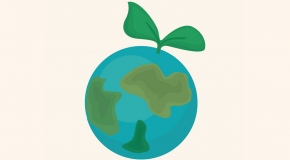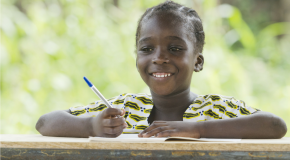As the world recognises progress in reducing the incidence of AIDS on World AIDS Day, as well as the work that lies ahead, the Economist Intelligence Unit (EIU) asked this entrepreneur-turned-activist in Bangladesh about incentives and the role of the private sector in improving healthcare services for underserved communities for a Q&A commissioned by the United Nations Foundation.
This is the second in a series of Q&As that will explore progress towards and what remains to be done to meet the Sustainable Development Goals (SDGs), 17 UN-backed goals that more than 190 countries agreed to prioritise as national targets in 2015. These targets include reducing environmental degradation and improving education, health and industrial innovation.
Ms Khan’s organisation, Friendship, uses floating hospitals to reach vulnerable populations, many of whom live on islands or in coastal areas. The organisation, founded in 2002, now serves 4.2 people annually through more than 400 satellite clinics.
Excerpts from an interview, as told to the EIU.
-------
EIU: You’ve said that the difference between NGOs’ (non-governmental organisations) “good” and “great” work lies in their transparency, reliability and accountability. How can progress towards the health SDGs (sustainable development goals) best be measured?
Runa Khan: “Great” work also requires the delivery of essential healthcare services in the right time frame, amount and way for a sustainable impact.
To do this, knowing the ecosystem [the geography and socio economic context] and working innovatively are critical. Organisations must be dependable so that people trust the system — so the entire community moves up the health rung.
Quality of service is also very important. For those unaware that a cure exists or that, for example, the EPI [Expanded Programme on Immunisation] prevents the onset of diseases like polio, the impact of healthcare must be made real. Patients taking medicine must get better without complications. And if there are complications, there must be follow-up. The poor cannot afford poor solutions.
A child who is lame and can walk again — that is real. Irrevocable curing creates trust. It creates demand. You don’t have to do everything. But you must always be truthful about what can and can’t be done. Changes are only possible if people trust the system.
The health SDGs can best be measured by trust and results. When people believe they can be cured through the delivery of quality health services, they change their healthcare-seeking behaviour.
EIU: Given the funding and infrastructure challenges developing countries face in many areas, how are they most effectively responding to the health SDGs? What is the best way to incentivise greater participation in health campaigns?
Runa Khan: For enduring health outcomes, we need to think holistically. Access, availability of doctors, funding and awareness are each important. But one factor cannot act alone.
And one must be realistic. Campaigns are only part of the solution. Awareness alone is just information. It doesn’t cure suffering.
For example, raising awareness of the importance of handwashing, clean toilets, pure drinking water and healthy behaviour for better health outcomes is very important. But these programmes or practices do not mean that preventable burns, orthopedic issues, diarrhea, fistulas, tetanus, difficulties at birth will not happen.
Doing things realistically and with true access to healthcare services determines the health outcomes of campaigns. Services must be available at a campaign’s start and continuously for campaigns to be effective and trustworthy. For instance, for successful birth control campaigns, dependable contraceptives must be continuously available.
Furthermore, communities need to believe that healthcare systems are working towards a true goal. Corruption or hidden agendas will erode a community’s will to participate. A hidden agenda in businesses, NGOs or the government in a healthcare programme will impact its sustainability.
EIU: What do you believe will best push the private sector to support campaigns that address the health SDGs?
Runa Khan: Businesses need to understand how poor health in the communities they serve or that serve them affects their business. If their customers are healthy and earn income, they buy and demand their goods or services. Businesses’ production improves with a healthy workforce.
If businesses want good workers, they have to do their part. For example, in Bangladesh, iodine deficiencies are a big problem. They lead to thyroid problems that impact growth, development and output.
This needs to go beyond CSR [Corporate Social Responsibility]. Businesses need this for their growth. Businesses need to be credible in their community. Investing in health helps their credibility.
EIU: Should resources be reallocated to better address the SDG health goals? Which stakeholders should lead the prioritising of funding for health campaigns given limited resources?
Runa Khan: Healthcare needs to be a priority. In most countries, the government is responsible for providing essential healthcare. When the government can’t do this, businesses and NGOs can provide supplementary services until the government takes charge, particularly for the poor.
For those that can afford additional healthcare services, businesses can also deliver these, provided such services are regulated.
Businesses can also partner with NGOs, which are service providers and understand community needs. Businesses have skills NGOs often cannot afford. These include administration, operation, finance, IT, communication, strategic planning, procurement and other back office and technical skills. Convergence is needed.
Above all, businesses bear the responsibility of paying taxes. Governments must ensure that tax revenue helps the people receive essential services.
EIU: Lack of doctors and healthcare providers, especially in rural areas, is a significant barrier to improving the quality of healthcare for some of the world’s most vulnerable people. How can such shortages be materially addressed?
Runa Khan: You can have the greatest ideas, money and people for programmes. But who is delivering at the field level? A healthcare system must address problems realistically.
For example, in Bangladesh, one doctor is officially available for every 60,000 people in remote areas, where there are few hospitals. How can healthcare services be provided in a country with so few doctors?
There are solutions. After analysing the 13.8m healthcare services Friendship has provided over 14 years, we found that 75% of needs can be met at the field-practitioner level. Thus doctors are only needed for the remaining 25%.
So we parse out the healthcare delivery at three levels.
Our Community Medic Aides are at the bottom tier. They receive one to five years of practical and academic medical training, collecting data and providing services. Each Community Medic Aide visits up to 150 houses every month and can give over-the-counter medicines through an m-health software system for follow-up and prevention.
Paramedics carry out more difficult healthcare tasks at the second level. They visit households once or twice a month, administering things like child immunisations. In the areas we serve, polio vaccinations rose from 3% to 99.8%.
Friendship hospitals and clinics or government hospitals do what [field-level paramedics] cannot do at the third level through referrals.
Building a holistic, dependable healthcare system that reaches vulnerable people takes time. Medical, ethical, technical and emergency training is necessary for such a system. But through hard work, focus and a vision, this can be done in five to ten years.







